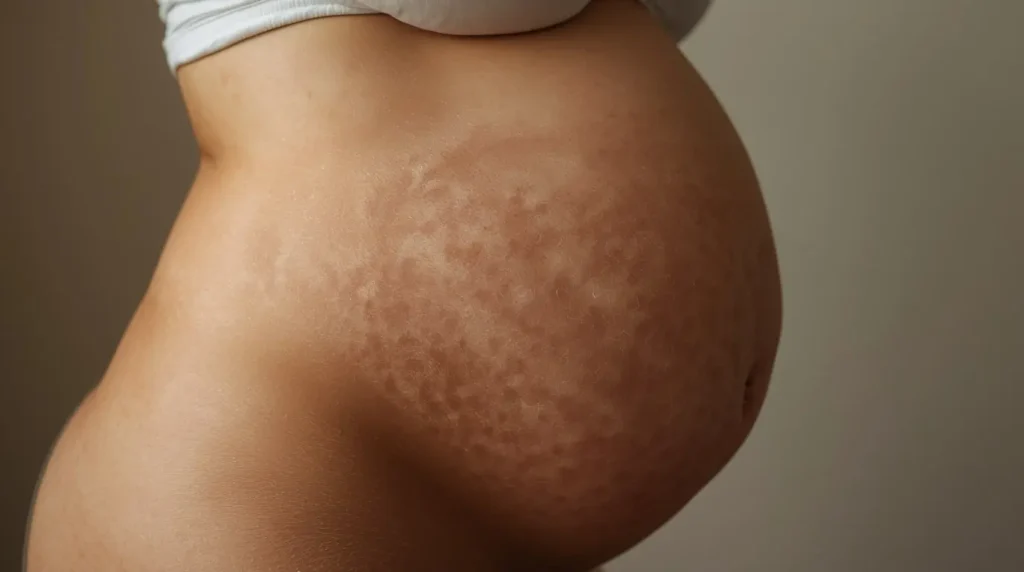Yes—pregnancy stretch marks (striae gravidarum) have a significant genetic component, meaning a family history increases the likelihood of developing them. Genetics influence skin properties like collagen and elastin, which affect how well skin tolerates stretching during pregnancy.
Why Genetics Matter
- Inherited differences in collagen and elastin structure and repair can make skin more prone to micro-tears when stretched, raising the risk of stretch marks if close relatives had them in pregnancy.
- Large-scale genetic studies have identified many genetic markers linked to susceptibility to stretch marks, supporting heredity as a key factor alongside physical stretching and hormones.
Other Key Contributors
- Mechanical stretch: Rapid or greater abdominal growth (e.g., multiple gestation, larger weight gain) increases skin strain and risk.
- Hormonal shifts: Pregnancy-related hormone changes can affect skin’s connective tissue and healing, making marks more likely in predisposed individuals.
What Can Help
- Gradual, healthy weight gain within clinician-recommended targets may reduce excessive skin strain.
- Daily moisturization and gentle skin care can support comfort and elasticity, though evidence for complete prevention is limited; genetics and stretching remain primary drivers.
Bottom line: Genetics plays a major role in whether pregnancy stretch marks develop, but rate of skin stretching and hormonal changes also contribute.








